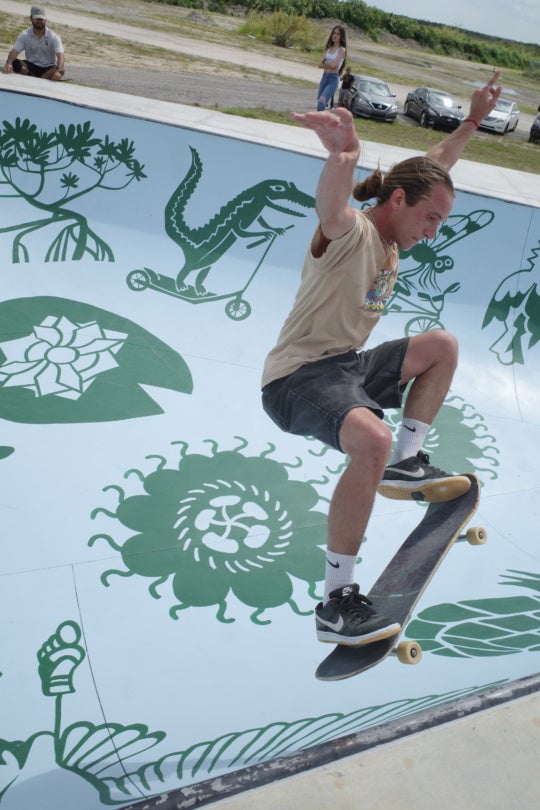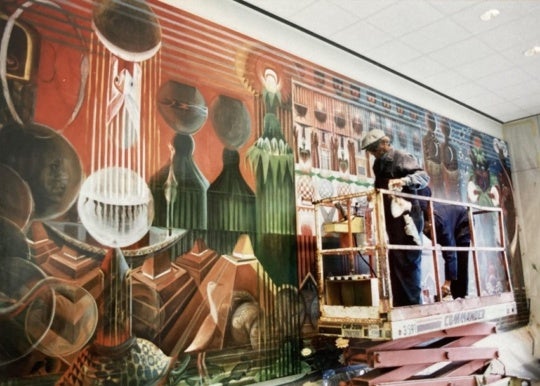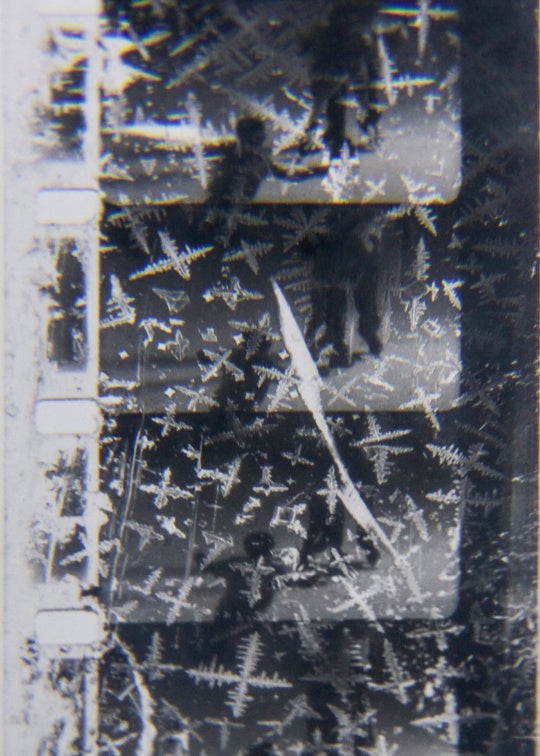
Grave digging was once a job that required heavy physical labor but now is mostly accomplished with backhoes and other excavation equipment. But for 71-year-old Everard Hall, who still plies his trade in a rural area of northern Maine, it is more than a job. He sees it as his calling in life. He considers his traditional hands-on approach his way of honoring the departed with a last rite. Hall is the inspiration behind Thalassa Raasch’s unconventional portraiture in the exhibition “Rim Road/Rim Road,” on view at Dodd Galleries at the University of Georgia in Athens through November 4. Though only partially glimpsed in a few photographs, Hall and aspects of his life permeate every image, whether it is depicting a room in his house, the surrounding landscape, a possession, or work tools.

Raasch, a newly minted MFA from the Rhode Island School of Design now based in Portland, Maine, first met Hall four years ago. They became good friends, and Raasch soon began to perceive him as a self-taught artist after he shared his personal photographs of his family and work through the years. Raasch credits Hall’s archive as part of a discovery process that helped develop her own visual aesthetic, culminating in the “Rim Road” project.
“Last summer I spent the whole summer living with him and his family,” Raasch says. “That’s where a lot of these images come from. I work in this very immersive way, so it was very important for me to be there with him—to help dig the graves with him, mow lawns …” Most significantly, Raasch had recently experienced a series of deaths in her family, three traumatic events in a row. “That’s actually what triggered me” to proceed with this idea. “I was grieving in a very difficult way, and I turned to Everard to figure out how to be comfortable with death because it is such a part of his daily life.”

The double title of the exhibition, “Rim Road/Rim Road,“ reflects the duality of the imagery. “Rim Road is actually the road Hall lives on,” Raasch explains, but she was drawn to the idea of something existing on the rim, a border, “where life and death coexist.” The photographs are organized to have the effect of a continuous loop, where repetition actually enhances the mortal and spiritual aspects of the imagery.
A good example of Raasch’s approach is Still Life, Addison, which looks carefully arranged but is actually something she captured in her documentary style. We see a section of a cemetery bordered by a chain-link fence and a gravestone marked with two American flags and some of Hall’s burial equipment — sod on a tarp, a ladder, a red and white thermos, and a yellow-handled rake. While many of Raasch’s photos have a gray, beige, or fading color palette attributable to the seasonal Maine weather and landscape, there are a few other images, like Still Life, Addison, in which the primary colors of a few individual items stand out sharply, providing details about the off-camera subject — Hall. The photograph also holds significance for Raasch because of an intimate detail only she would know — the roll of paper towels that Hall uses to wipe his sweat away as he works.

Religious iconography plays a recurring role in the exhibition, as in Moon Streak, which is a nighttime shot of the entrance to Hall’s residence illuminated by a glaring porch light. Within the photo, you can see the strategic exterior placement of three separate crosses, but what is that light in the sky? Divine illumination? And there are a few photos that seem to be more abstractly a part of Raasch’s narrative arc, such as Frozen Styx with its wintry setting of trees that appear to be breaking through the imprisoning ice. In reality, this is just another aspect of Hall’s world — the often harsh and unforgiving nature of Maine’s climate, yet still beautiful in its raw form.
Another photograph that provides a fascinating window onto Hall’s world and personality is Everard Workshop, an interior shot of his shed where tools and personal items like snapshots, clippings, and possessions coexist in a creative chaos that encourages interaction with each item. There is something endearingly eccentric about Raccoons, Bedroom Corner that aptly illustrates the title; it depicts the corner of a room with wood-paneling and a lace-curtained window on either side and would be drab and unremarkable were it not for the quirky detail of a raccoon photograph and a drawing of raccoons hung between the windows.

On first impression, “Rim Road/Rim Road” has an austerity that reflects the economically depressed surroundings of this off-the-grid rural community. The opening and closing photographs of the exhibition, captured at different times of the day, show a weathered trailer home where Hall and his family live. This unglamorized reality is part of the total experience, and it transforms what could be a bleak and depressing subject into something accessible and contemplative.
Sooner or later everyone has to come to terms with death, but Raasch has found an engaging way to address this topic by spotlighting a friend, who just happens to be a gravedigger, as the link between the living and the departed. All of the photographs are open to multiple interpretations, and you could walk away from “Rim Road” thinking the exhibition was about a day in the life of a gravedigger, a eulogy for a dying profession, or maybe the eternal cycle of interment and rebirth. But I tend to favor one of Raasch’s suggestions that Hall could be a contemporary ferryman crossing the river Styx. His connection with the earth and the intimacy of death makes him a perfect guide for border crossings, and “Rim Road” expresses this in an eloquent and free-flowing manner, devoid of pretension or romanticism.
“Rim Road/Rim Road is on view at Bridge Gallery in the Lamar Dodd School of Art/Dodd Galleries through November 4.November 2016. Artist talk at Lamar Dodd School of Art, University of Georgia.
Jeff Stafford writes about art, film, music, gardening and other favorite topics for various digital publications.




